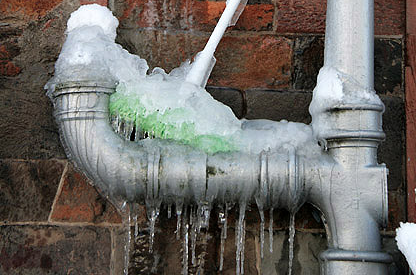How to Avoid Frozen Plumbing in Cold Weather: Expert Guidance
How to Avoid Frozen Plumbing in Cold Weather: Expert Guidance
Blog Article
The publisher is making a few great pointers related to How To Avoid Freezing Pipes as a whole in the article following next.

Winter can damage your plumbing, especially by freezing pipes. Right here's just how to prevent it from taking place and what to do if it does.
Intro
As temperature levels decline, the danger of frozen pipelines boosts, potentially causing pricey repair work and water damage. Comprehending how to prevent icy pipes is essential for homeowners in cool climates.
Recognizing Frozen Pipelines
What triggers pipelines to freeze?
Pipelines freeze when subjected to temperatures listed below 32 ° F (0 ° C) for expanded periods. As water inside the pipelines freezes, it broadens, taxing the pipe walls and possibly causing them to rupture.
Threats and problems
Frozen pipes can cause supply of water interruptions, residential or commercial property damage, and costly fixings. Ruptured pipelines can flood homes and cause comprehensive structural damage.
Signs of Frozen Pipeline
Determining frozen pipes early can stop them from breaking.
Just how to determine icy pipelines
Look for reduced water flow from taps, uncommon smells or sounds from pipes, and visible frost on revealed pipelines.
Prevention Tips
Shielding susceptible pipes
Cover pipes in insulation sleeves or utilize warmth tape to shield them from freezing temperature levels. Concentrate on pipes in unheated or outside areas of the home.
Heating methods
Keep indoor areas appropriately warmed, specifically areas with plumbing. Open up cupboard doors to allow cozy air to circulate around pipelines under sinks.
Shielding Outside Pipes
Garden hose pipes and outside taps
Disconnect and drain garden pipes prior to winter. Set up frost-proof spigots or cover outside faucets with protected caps.
What to Do If Your Pipelines Freeze
Immediate actions to take
If you believe frozen pipelines, keep taps open to relieve stress as the ice thaws. Utilize a hairdryer or towels taken in hot water to thaw pipes gradually.
Long-Term Solutions
Structural modifications
Take into consideration rerouting pipelines away from exterior wall surfaces or unheated areas. Add additional insulation to attic rooms, cellars, and crawl spaces.
Updating insulation
Invest in top quality insulation for pipelines, attics, and walls. Correct insulation helps maintain constant temperature levels and reduces the threat of icy pipelines.
Final thought
Protecting against icy pipelines needs proactive actions and quick feedbacks. By comprehending the reasons, signs, and safety nets, homeowners can secure their pipes throughout cold weather.
5 Ways to Prevent Frozen Pipes
Drain Outdoor Faucets and Disconnect Hoses
First, close the shut-off valve that controls the flow of water in the pipe to your outdoor faucet. Then, head outside to disconnect and drain your hose and open the outdoor faucet to allow the water to completely drain out of the line. Turn off the faucet when done. Finally, head back to the shut-off valve and drain the remaining water inside the pipe into a bucket or container. Additionally, if you have a home irrigation system, you should consider hiring an expert to clear the system of water each year.
Insulate Pipes
One of the best and most cost-effective methods for preventing frozen water pipes is to wrap your pipes with insulation. This is especially important for areas in your home that aren’t exposed to heat, such as an attic. We suggest using foam sleeves, which can typically be found at your local hardware store.
Keep Heat Running at 65
Your pipes are located inside your walls, and the temperature there is much colder than the rest of the house. To prevent your pipes from freezing, The Insurance Information Institute suggests that you keep your home heated to at least 65 degrees, even when traveling. You may want to invest in smart devices that can keep an eye on the temperature in your home while you’re away.
Leave Water Dripping
Moving water — even a small trickle — can prevent ice from forming inside your pipes. When freezing temps are imminent, start a drip of water from all faucets that serve exposed pipes. Leaving a few faucets running will also help relieve pressure inside the pipes and help prevent a rupture if the water inside freezes.
Open Cupboard Doors
Warm your kitchen and bathroom pipes by opening cupboards and vanities. You should also leave your interior doors ajar to help warm air circulate evenly throughout your home.

Do you really like reading about How To Avoid Freezing Pipes? Leave feedback further down. We'd be pleased to see your suggestions about this write-up. We hope that you come back again in the near future. Sharing is good. You just don't know, you may very well be helping someone out. Bless you for being here. Kindly visit our site back soon.
Contact Us Now Report this page